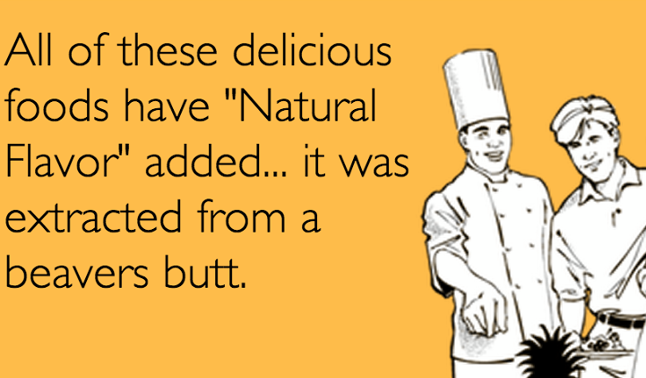Why a Little Horsemeat is the Least of Your Worries…
Although the recent discovery that many European processed foods contain horsemeat has been upsetting for consumers, it didn’t pose a health threat to those who consumed these products. In reality, the North American food system is rife with ingredients that can (literally) turn your tummy.
Cochineal
The red coloring in many foodstuffs is manufactured from cochineal which gets its red color from crushed parasitic beetles. Starbucks recently admitted that its strawberry drinks contain a dash of crushed bug juice as do many red foods like strawberry flavored drinks, ice creams and yogurts.
Castoreum extract
Ok, spoiler alert… if the bug juice freaked you out, then I warn you to read no further, because what I am going to tell you next is so bizarre as to actually defy belief and may ruin cookies and ice cream for you forever.
Still with me? Then what we have next on our list of disgusting ingredients is castoreum extract which is used to flavor strawberry and vanilla ice cream, cookies and yogurts. Castoreum extract comes from beaver’s anal glands. (Um question; who looked a beaver butt and said “Hey that looks delicious!”?)
Beaver butt is a little harder to avoid as its rarely labeled as castoreum extract and is often just listed as ‘flavoring’.
Shellac
Yes the same shellac from those fancy manicures and the stuff that keeps the coffee spills from ruining your wooden desk also gives your jelly beans, fruit and coffee beans their shiny appearance. Yum.
Flame retardants (you know, in case your insides are on fire)
Brominated vegetable oil, or BVO, is a toxic flame retardant that was originally used to prevent plastics from catching on fire. But now many soda companies use it in their drinks, including Mountain Dew, Fanta Orange, Sunkist Pineapple, and some Gatorade and Powerade flavors. A campaign by sixteen year old Sarah Kavanagh got Pepsi to stop using BVO in Gatorade (now that’s some Greenmoxie!)
First rule of FDA….
There are certain allowances made by the FDA for nasties in foods before they get pulled from the shelf for example: 19 maggots and 74 mites in each can of mushrooms, 30 bug bits and a rodent hair for every 100g of peanut butter, 1 maggot per 100g of tomato juice, in addition to chemicals and cysts.
Eating organic, whole foods rather than processed foods wherever possible is the best way to ensure that you know exactly what is going into your body.
Need some good karma? ‘Like’ us on Facebook and get more good vibes than you can poke a sharp stick at.





What a great article, who would have thought that the world of food is not what we thought. They should put these things in the labels, not hide it from us
Absolutely. Where do companies get off feeding us things that I wouldn’t even feed my dog? Do they feed their kids this stuff? Yes and who actually came up with the beaver butt idea???
I agree Cheryl. Its pretty crazy. What’s worse is that we aren’t told exactly what’s in what we eat which I think should be a basic right.